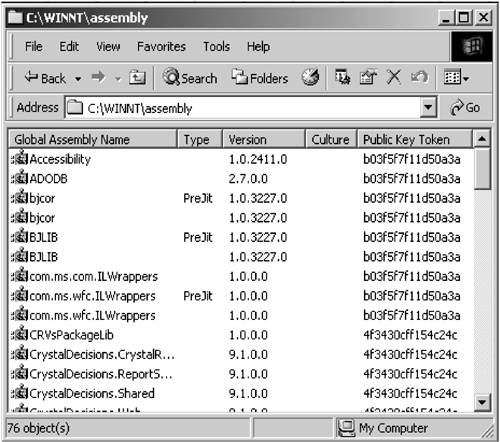F.2 Shared assemblies and the GAC
| .NET assemblies can be categorized into two groups:
The global assembly cache (GAC) is where global shared assemblies are placed. Treat it like a normal folder (or directory) in a shared server from which client machines can retrieve shared assemblies in a distributed environment. You can view the contents of your local machine's GAC using Windows Explorer (go to c:\winnt\assembly “ if c:\winnt is where your Windows operating system is installed). The assembly cache viewer [1] is installed together with the .NET framework. When you view your GAC using Windows Explorer, the assembly cache viewer kicks in automatically and, instead of the usual file attributes, you will see columns pertaining to assemblies such as type, version, and public key token “ see Figure F.1.
Figure F.1. Viewing the GAC using Windows Explorer. There is a useful command line tool called gacutil.exe that you can use to perform tasks such as:
|
EAN: 2147483647
Pages: 221
